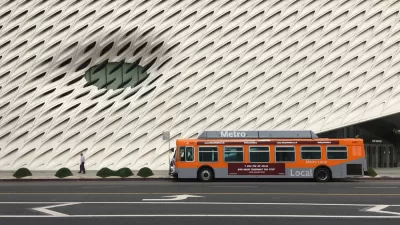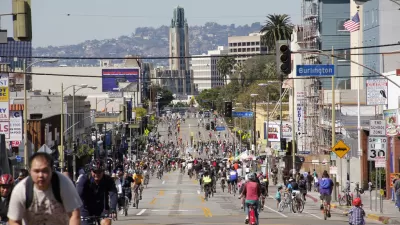Transportation planning decisions affect our lives in many ways. New Quick Bites (short reports) published by the Institute of Transportation Engineers can help create healthier and happier communities.

Transportation and Health Resources
The following is a listing of the Institute of Transportation Engineer's most recent publications for this topic.
ITE QuickBite (Active Transportation): Transportation as a Determinant of Health
Transportation is much more than mobility; it is a social determinant of health (SDOH). Social determinant of health is a framework that recognizes that an individual's health status is influenced by factors at many levels. One such factor is the design of cities and communities, including transportation infrastructure. In fact, place is so influential for health status that an individual's zip code is a greater predictor of life expectancy than his or her genetic code.
ITE QuickBite (Active Transportation): Transportation as a Determinant of Health
Transportation is much more than mobility; it is a social determinant of health (SDOH). Social determinant of health is a framework that recognizes that an individual's health status is influenced by factors at many levels. One such factor is the design of cities and communities, including transportation infrastructure. In fact, place is so influential for health status that an individual's zip code is a greater predictor of life expectancy than his or her genetic code.
ITE QuickBite (Active Transportation): Transportation for Mental Health and Happiness
Transportation planning decisions can affect people's lives in many ways, including mental health and happiness (also called "subjective wellbeing" or "life satisfaction"). Following are various ways that certain transportation planning decisions can support mental health and happiness goals.
ITE QuickBite (Active Transportation): Health and Co-Benefits of Active Transportation
Active travel infrastructure is a proven strategy for increasing physical activity. How much more walking or cycling an individual or community obtains--the magnitude of the effect--depends on a variety of factors, including whether there are destinations within walking or bicycling distance, how direct the route is, and how safe and secure individuals feel.
Transportation’s Role in Public Health Transportation plays an important role in health, well-being, and quality of life. The transportation system provides access to goods and services critical to health such as affordable/healthy foods, health care, education, and career opportunities. Active transportation options are known to increase physical activity, reduce obesity, and lower rates of disease. Transportation is a top contributor to urban air pollution, with major impacts to respiratory and lung health. The transportation system has a significant impact on the health of our communities.
Improving Arterial Roads to Support Public Health: How Can We Do This?
A desire to protect and enhance public health has motivated improvements to arterial roads and corridors. There are countless "on the ground" examples that illustrate this. In 2016, the Urban Land Institute (ULI) published a report on its Healthy Corridor Project describing how four communities in the United States implemented improvements along specific corridors with the goal of making positive changes in the health of the people who live, work, and travel along them. The improvements targeted health by expanding the set of relevant issues to include food access, physical activity, economic opportunities, and affordable housing in addition to pedestrian and bicycle safety.
ITE’s Role in Integrating Transport & Public Health - Paper
ITE’s Role in Integrating Transport & Public Health - Presentation
FULL STORY: New Transportation and Health Resources

Maui's Vacation Rental Debate Turns Ugly
Verbal attacks, misinformation campaigns and fistfights plague a high-stakes debate to convert thousands of vacation rentals into long-term housing.

Planetizen Federal Action Tracker
A weekly monitor of how Trump’s orders and actions are impacting planners and planning in America.

Chicago’s Ghost Rails
Just beneath the surface of the modern city lie the remnants of its expansive early 20th-century streetcar system.

Bend, Oregon Zoning Reforms Prioritize Small-Scale Housing
The city altered its zoning code to allow multi-family housing and eliminated parking mandates citywide.

Amtrak Cutting Jobs, Funding to High-Speed Rail
The agency plans to cut 10 percent of its workforce and has confirmed it will not fund new high-speed rail projects.

LA Denies Basic Services to Unhoused Residents
The city has repeatedly failed to respond to requests for trash pickup at encampment sites, and eliminated a program that provided mobile showers and toilets.
Urban Design for Planners 1: Software Tools
This six-course series explores essential urban design concepts using open source software and equips planners with the tools they need to participate fully in the urban design process.
Planning for Universal Design
Learn the tools for implementing Universal Design in planning regulations.
planning NEXT
Appalachian Highlands Housing Partners
Mpact (founded as Rail~Volution)
City of Camden Redevelopment Agency
City of Astoria
City of Portland
City of Laramie



























